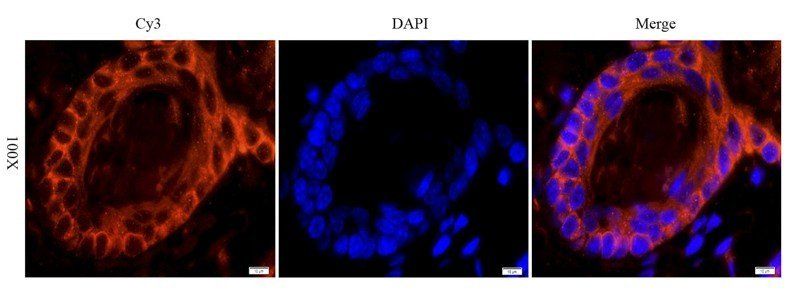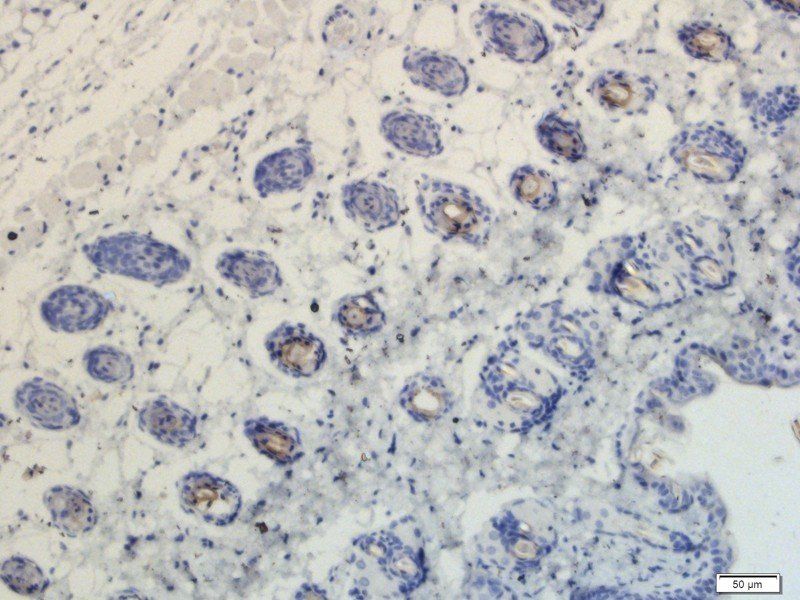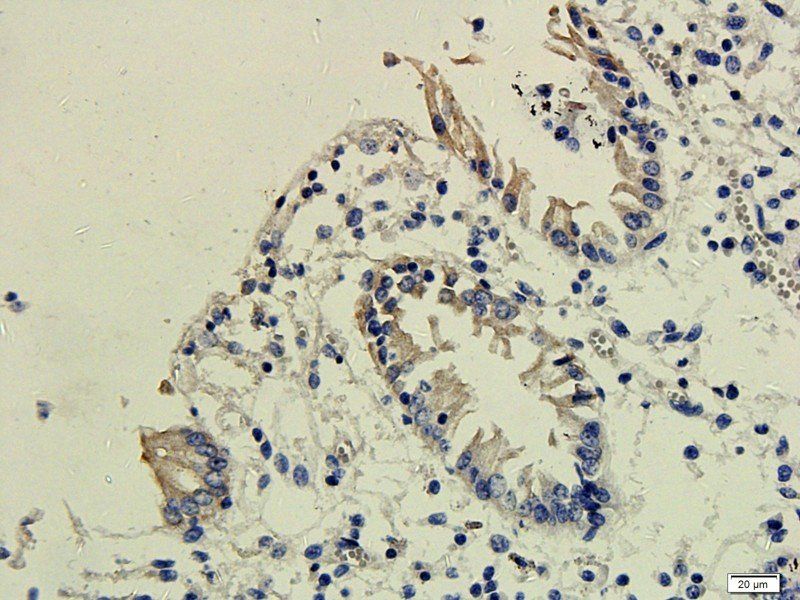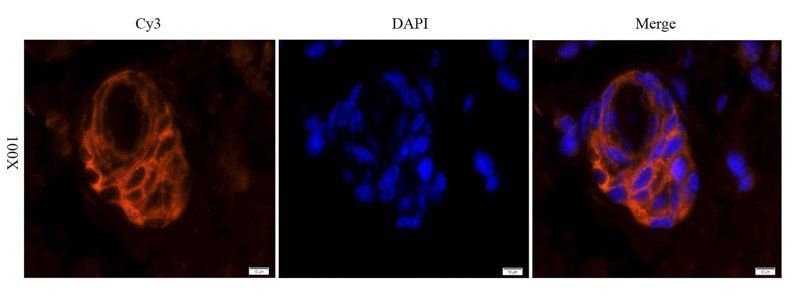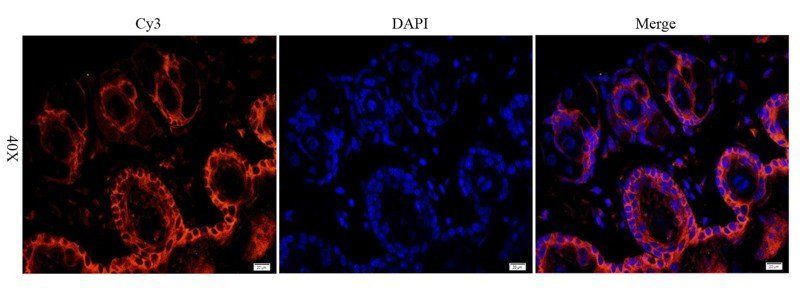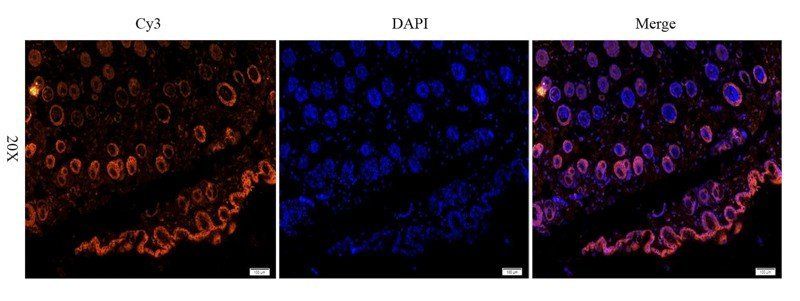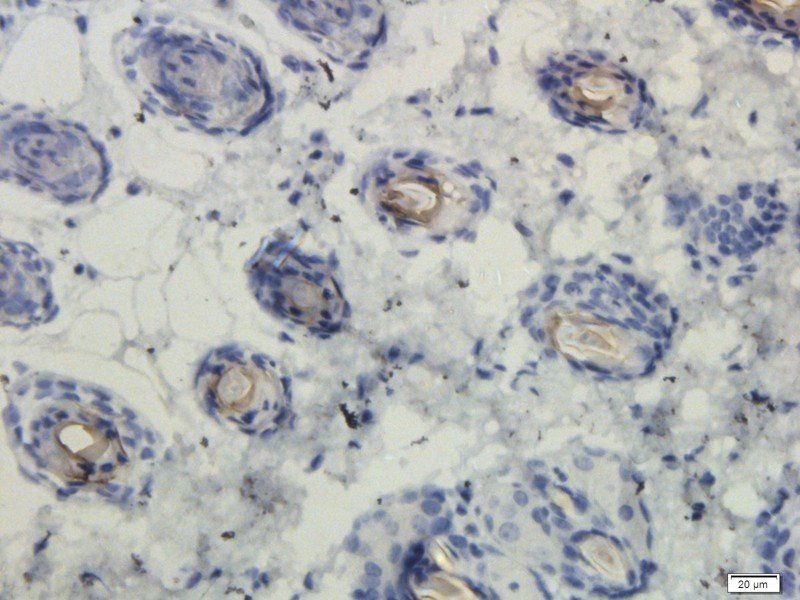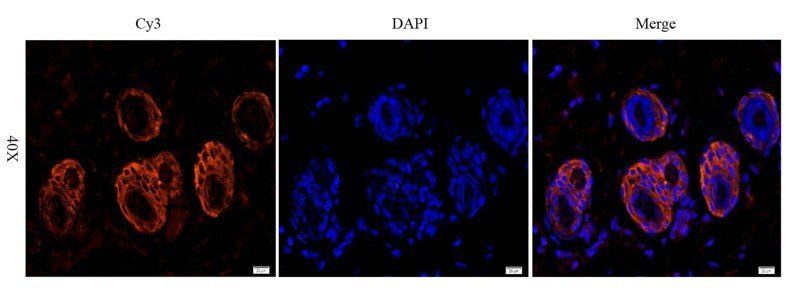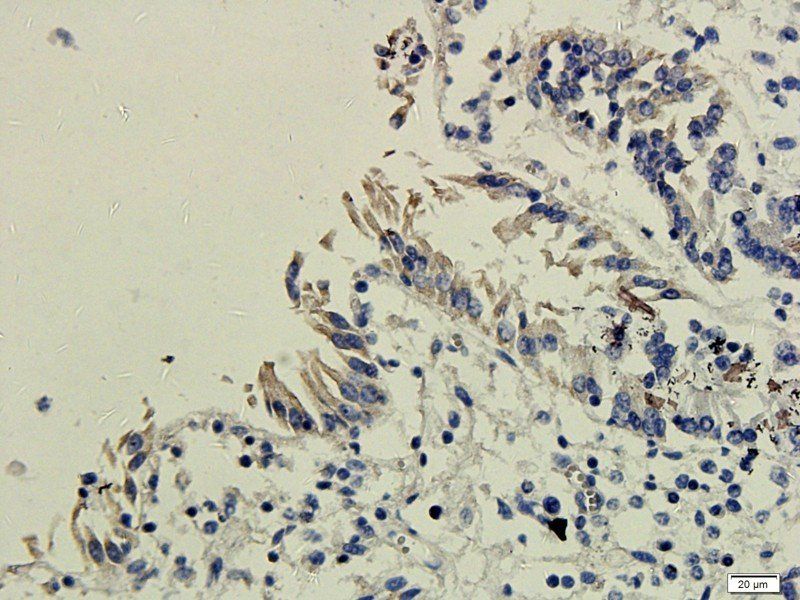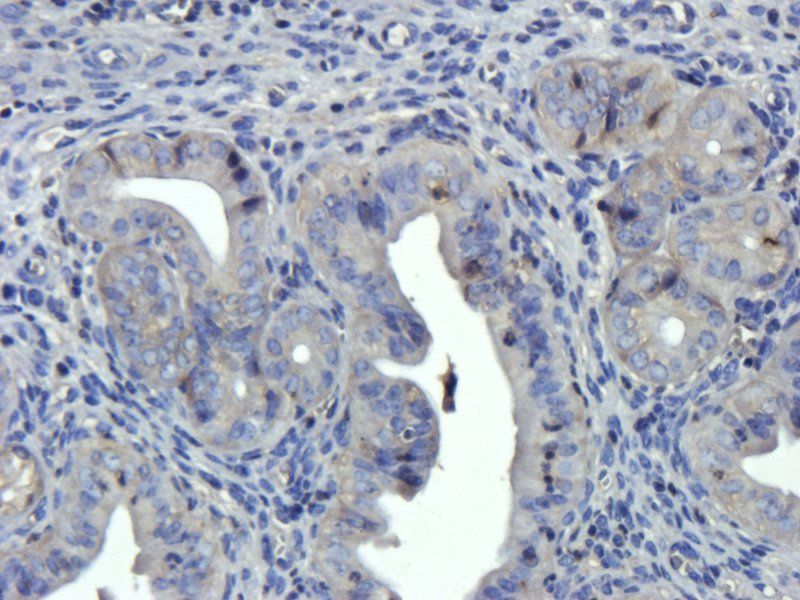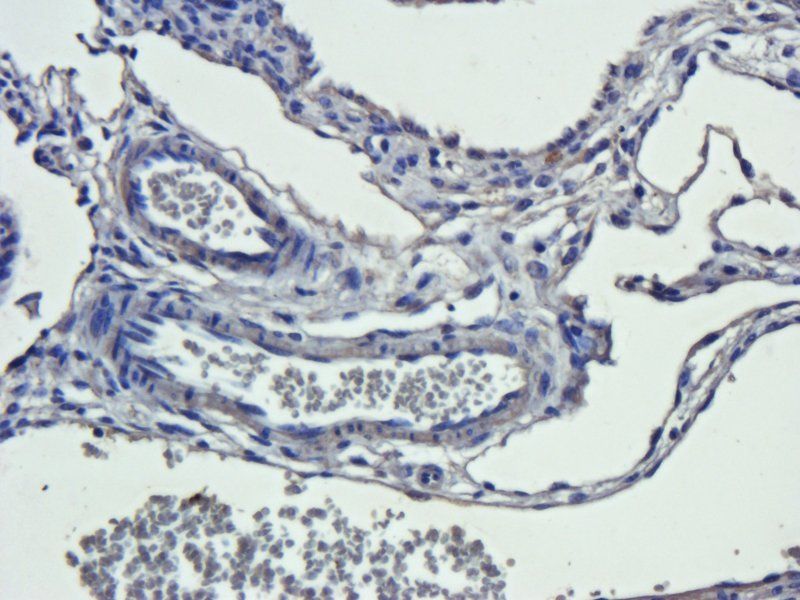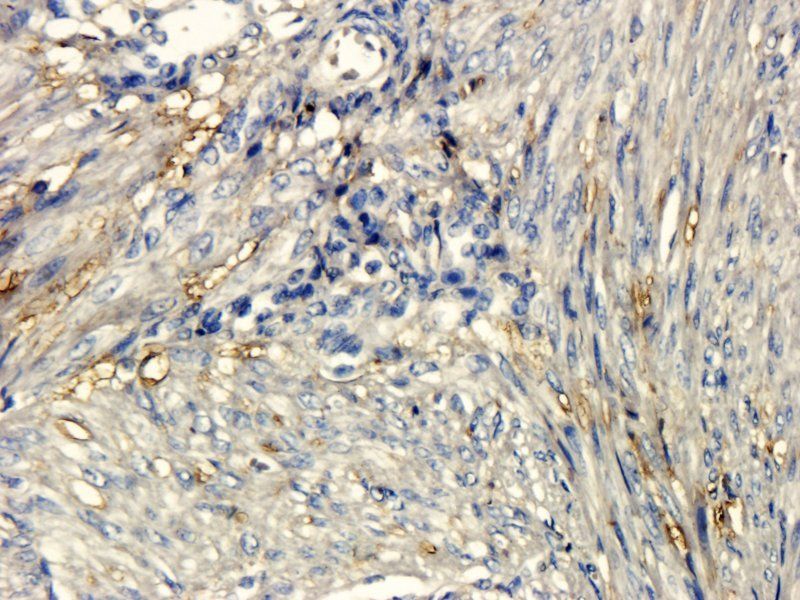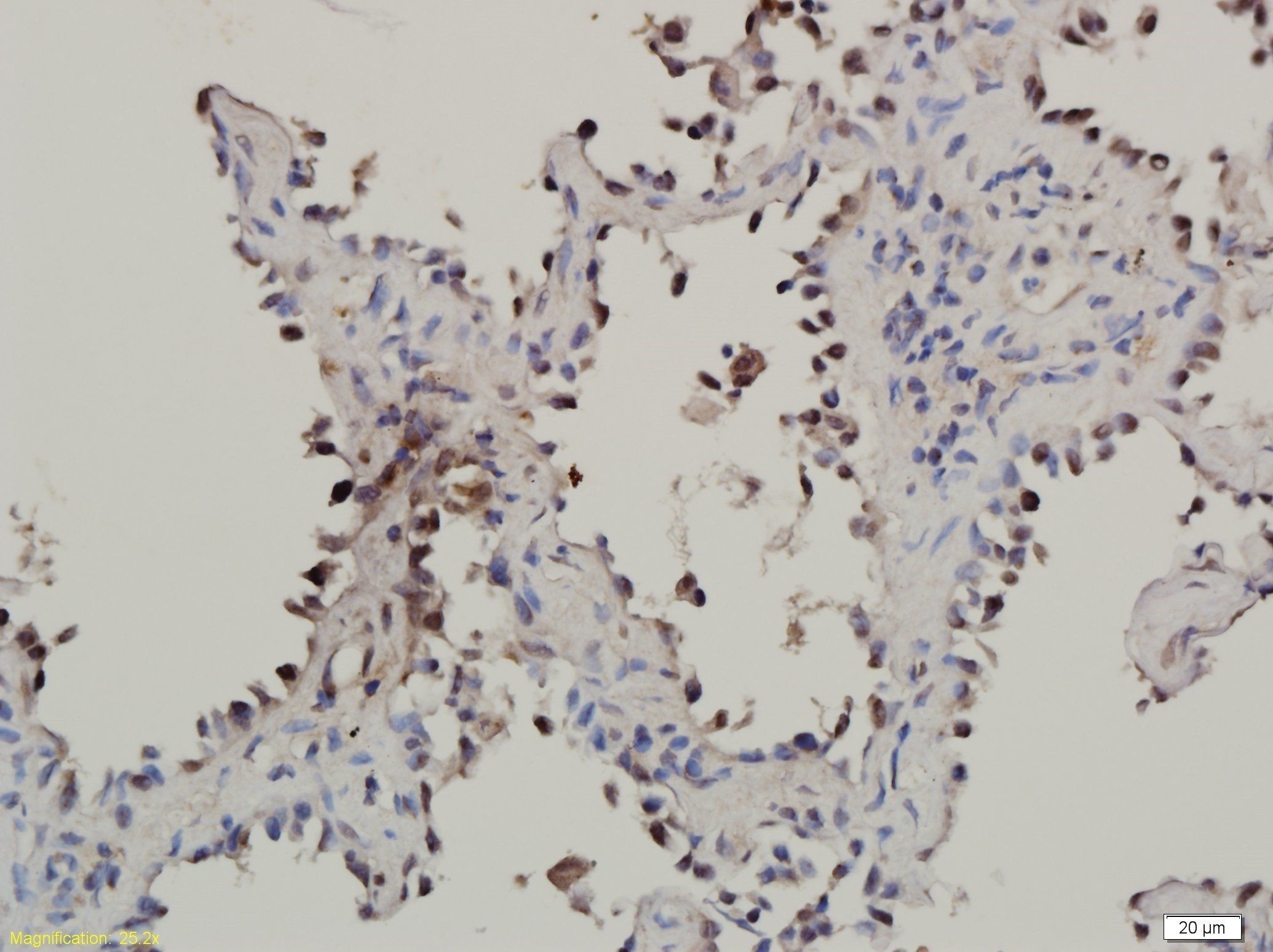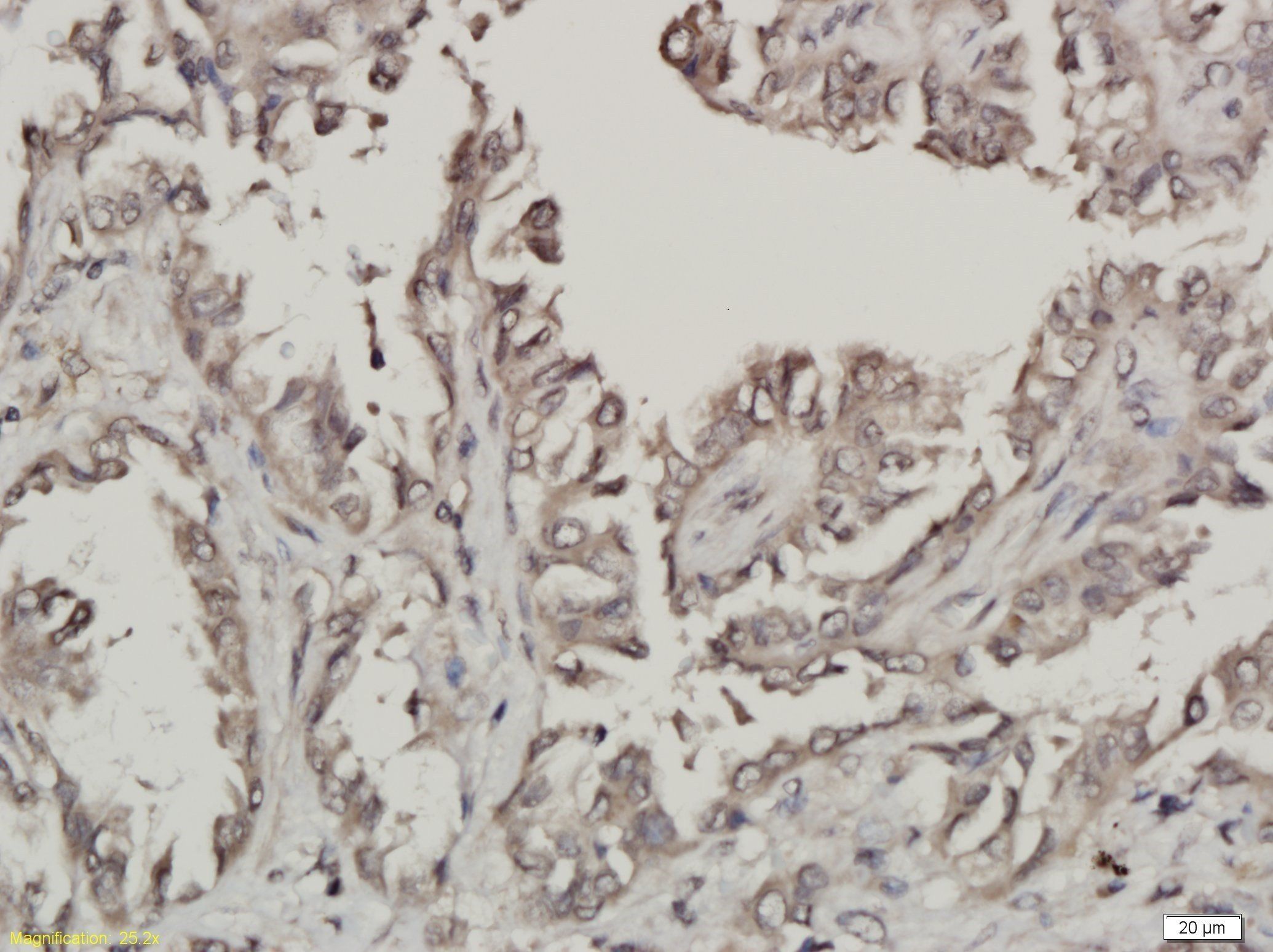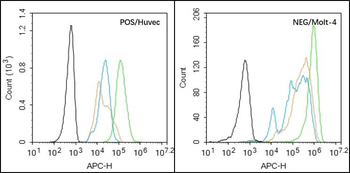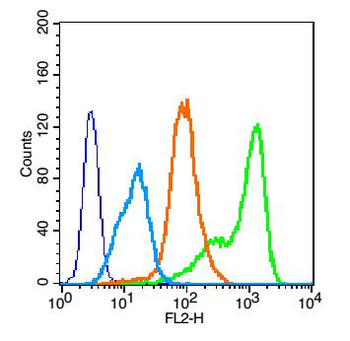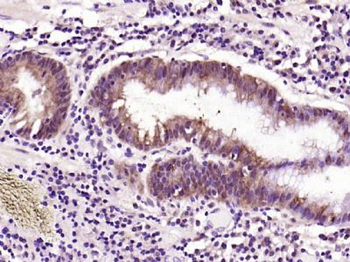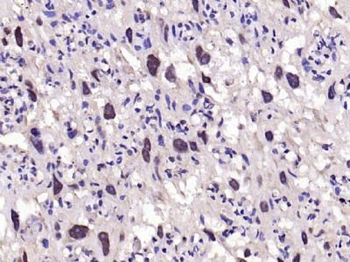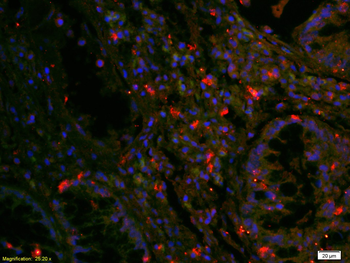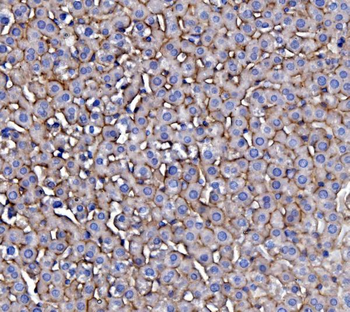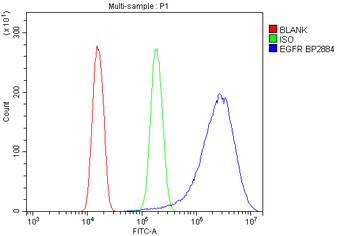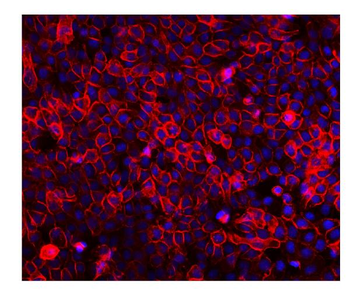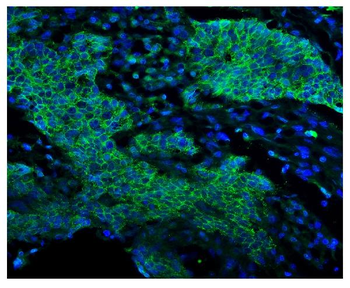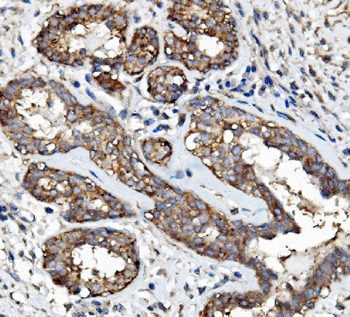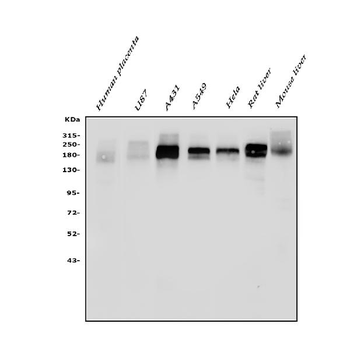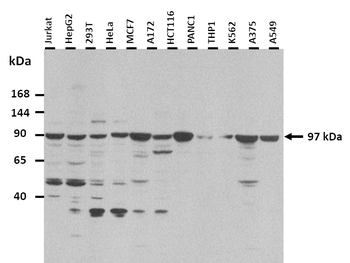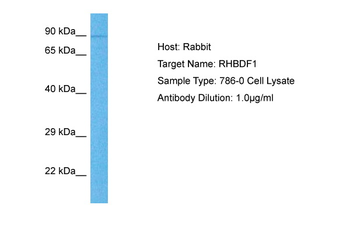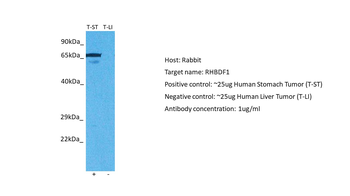You have no items in your shopping cart.
EGFR Antibody
Catalog Number: orb1939223
| Catalog Number | orb1939223 |
|---|---|
| Category | Antibodies |
| Description | EGFR Antibody |
| Clonality | Monoclonal |
| Species/Host | Mouse |
| Isotype | IgG1κ |
| Conjugation | Unconjugated |
| Reactivity | Human |
| Form/Appearance | Purified monoclonal antibody supplied in PBS with 0.09% (W/V) sodium azide. This antibody is purified through a protein G column, followed by dialysis against PBS. |
| UniProt ID | P00533 |
| MW | 134277 Da |
| Tested applications | FC, IHC-P, WB |
| Dilution range | FC - 1:25, IHC-P - 1:100-500, WB - 1:2000 |
| Storage | Maintain refrigerated at 2-8°C for up to 2 weeks. For long term storage store at -20°C in small aliquots to prevent freeze-thaw cycles |
| Alternative names | ERBB, ERBB1, HER1 |
| Research Area | Cancer Biology, Signal Transduction |
| Note | For research use only |
| Expiration Date | 12 months from date of receipt. |

Formalin-fixed and paraffin-embedded human breast carcinoma with EGFR Monoclonal Antibody, which was peroxidase-conjugated to the secondary antibody, followed by DAB staining. This data demonstrates the use of this antibody for immunohistochemistry; clinical relevance has not been evaluated.
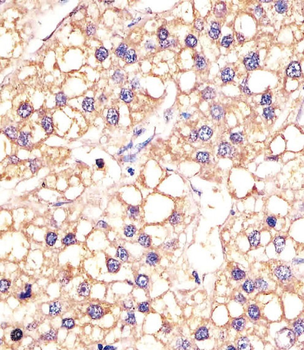
Staining EGFR in human hepatic carcinoma sections by Immunohistochemistry (IHC-P - paraformaldehyde-fixed, paraffin-embedded sections). Tissue was fixed with formaldehyde and blocked with 3% BSA for 0.5 hour at room temperature; antigen retrieval was by heat mediation with a citrate buffer (pH6). Samples were incubated with primary antibody (1/25) for 1 hours at 37°C. A undiluted biotinylated goat polyvalent antibody was used as the secondary Antibody.

Staining EGFR in human lung adenocarcinoma sections by Immunohistochemistry (IHC-P - paraformaldehyde-fixed, paraffin-embedded sections). Tissue was fixed with formaldehyde and blocked with 3% BSA for 0.5 hour at room temperature; antigen retrieval was by heat mediation with a citrate buffer (pH6). Samples were incubated with primary antibody (1/25) for 1 hours at 37°C. A undiluted biotinylated goat polyvalent antibody was used as the secondary Antibody.

Overlay histogram showing Hela cells (green line). The cells were fixed with 2% paraformaldehyde (10 min) and then permeabilized with 90% methanol for 10 min. The cells were then icubated in 2% bovine serum albumin to block non-specific protein-protein interactions followed by the antibody (1:25 dilution) for 60 min at 37°C. The secondary antibody used was Goat-Anti-Mouse IgG, DyLight 488 Conjugated Highly Cross-Adsorbed at 1/200 dilution for 40 min at 37°C. Isotype control antibody (blue line) was mouse IgG1 (1 μg/1x10^6 cells) used under the same conditions. Acquisition of > 10000 events was performed.

Western blot analysis of lysates from A431, MDA-MB-468 cell line (from left to right), using EGFR Antibody. diluted at 1:1000 at each lane. A goat anti-mouse IgG H&L (HRP) at 1:10000 dilution was used as the secondary Antibody. Lysates at 20 μg per lane.
EGFR isoform a variant antibody [orb308736]
ELISA, ICC, IF, IHC-P, WB
Human, Mouse, Porcine, Rat
Rabbit
Polyclonal
Unconjugated
100 μgEGFR Rabbit Polyclonal Antibody [orb10580]
FC, IF, IHC-Fr, IHC-P, WB
Canine, Mouse, Porcine
Human, Rat
Rabbit
Polyclonal
Unconjugated
100 μl, 200 μl, 50 μlEGFR Antibody [orb654422]
ELISA, FC, ICC, IF, IHC, WB
Human, Mouse, Rat
Rabbit
Polyclonal
Unconjugated
100 μgRHBDF1 Rabbit Polyclonal Antibody [orb580834]
WB
Bovine, Canine, Equine, Guinea pig, Mouse, Rabbit, Rat, Zebrafish
Human
Rabbit
Polyclonal
Unconjugated
100 μl
EGFR Antibody (orb1939223)
Participating in our Biorbyt product reviews program enables you to support fellow scientists by sharing your firsthand experience with our products.
Login to Submit a Review




